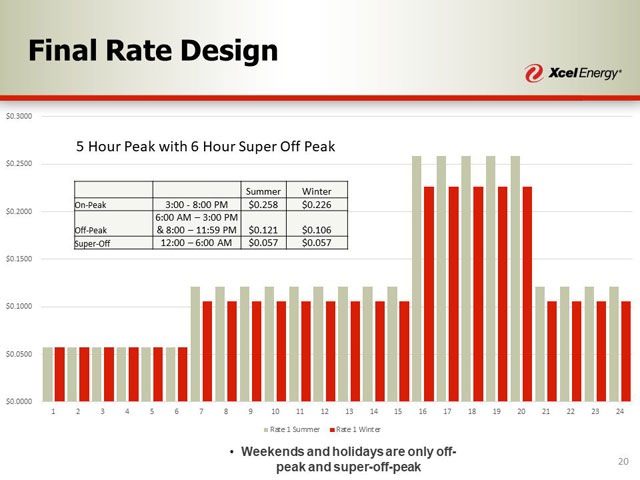This blog is an excerpt from an article in Utility Dive.
Some say pilot projects are a way to avoid the risk of real innovation, but a proposed Xcel Energy pilot to test time-of-use (TOU) rates is charging at innovation and winning praise as it goes.
Xcel’s objectives are to find out how to effectively engage customers and if price signals can get customers to shift energy usage away from the peak, Aakash Chandarana, Xcel VP of Rates and Regulatory Affairs, told Utility Dive. Utility surveys consistently find customers “don’t really care,” he said. “This pilot will allow Xcel to test what our customers truly want.”
The program is expected to drive greater use of renewables and reduce peak demand. Initial reactions are positive from a range of stakeholders.
The pilot will require expenditures that must be paid for by customers, which rarely gets an unequivocal endorsement from ratepayer advocates. But Minnesota Citizens Utility Board (CUB) Executive Director Annie Levenson-Falk said she is happy to see Xcel moving ahead with the pilot because it will likely deliver customer savings.
In addition, utility rate design pilots are usually not structured well enough to satisfy experts. Yet Rocky Mountain Institute (RMI) rate design authority Dan Cross-Call emailed that Xcel’s “is promising and applies many good design elements.” The pilot “follows many best practices” and will likely support a “future rollout of widespread opt-out TOU rates,” RMI pilot project authority Mike Henchen added.
The two-year, 17,500-customer plan to use three price tiers and drive more off-peak use of Minnesota wind has stood up to serious stakeholder scrutiny. The worst thing said about it so far? It doesn’t start soon enough.
Utilities across the country thinking about TOU rates may need to take a close look it.

Xcel, Great Plains Institute and the Minnesota Center for Energy and the Environment convened a stakeholder group in May to work through the pilot’s details. Six intensive workshops were attended by the conveners, the Minnesota Department of Commerce, the Minnesota Office of Attorney General, CUB, Fresh Energy, Stoel Rives attorneys, the Suburban Rate Authority and Energy CENTS Coalition.
Xcel’s market research revealed that “substantial effort” in customer education will be “critical” because of a “considerable lack of knowledge” about energy and, especially, about variable pricing.
The research also found that customers who live in multi-family housing will require special consideration and that customers’ responses to new information from advanced metering infrastructure (AMI) is “largely unknown.” The customer data derived from the AMI information should be used in “small steps,” the research added.
The pilot will be big enough to have “statistically significant results” about how “a broad range of personal incomes, housing types and energy usage patterns” react, Xcel promised the stakeholder group.


